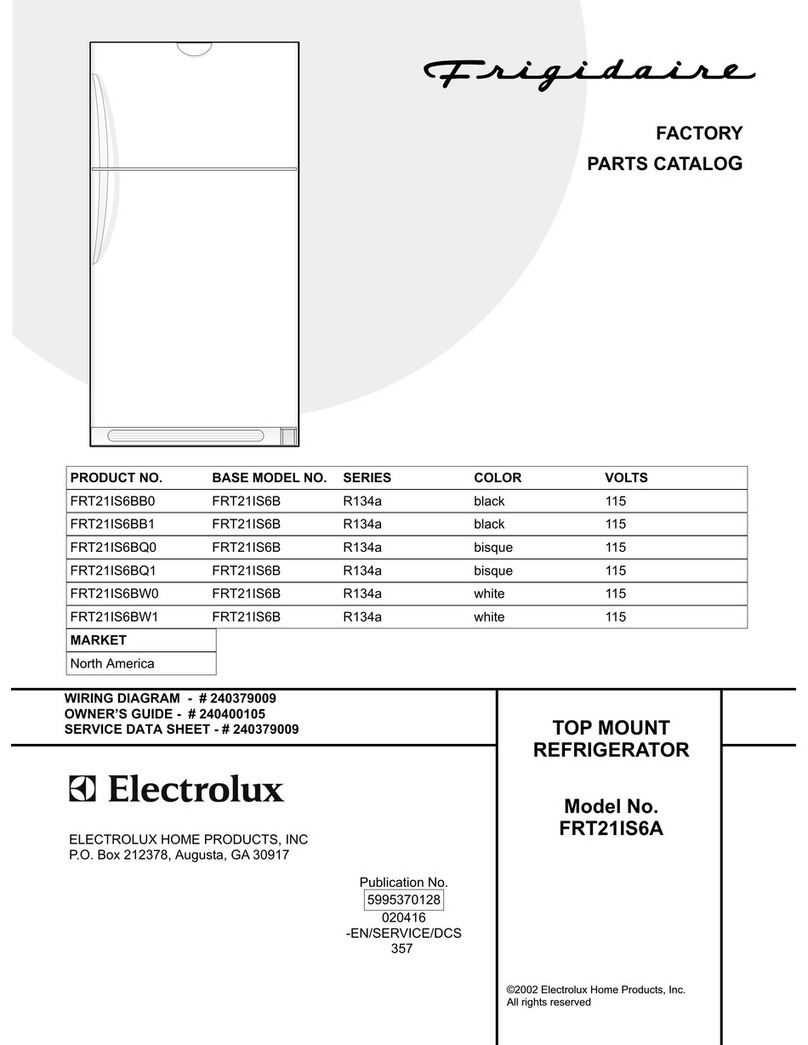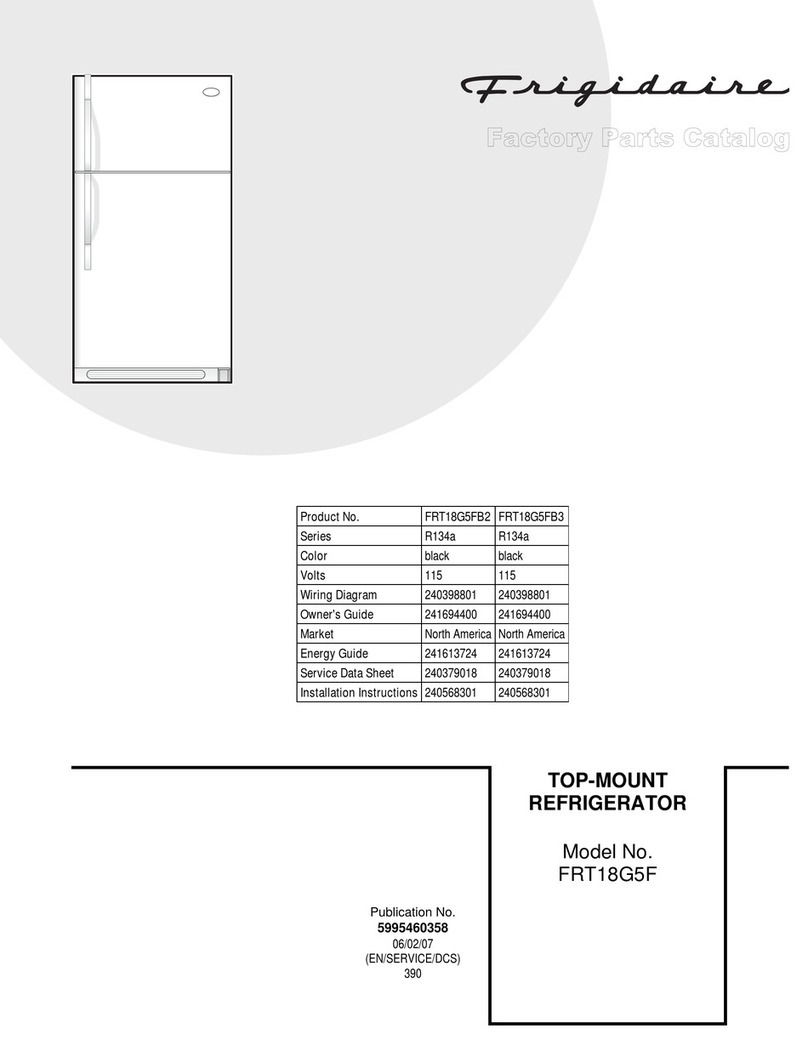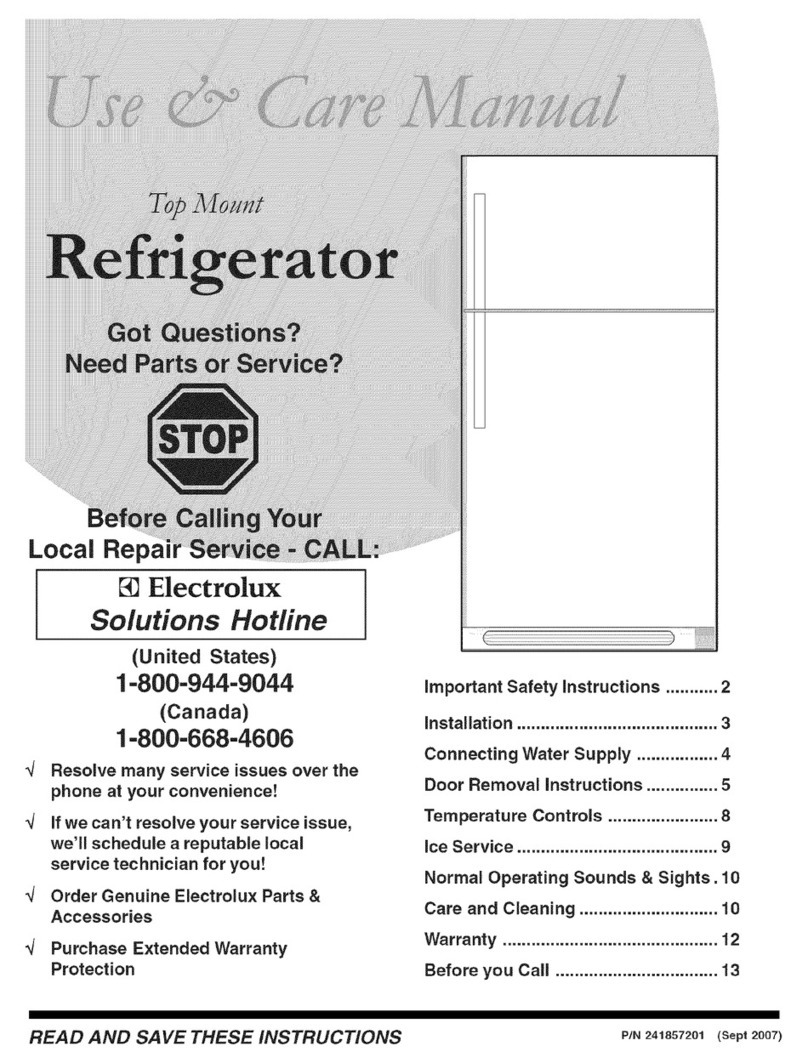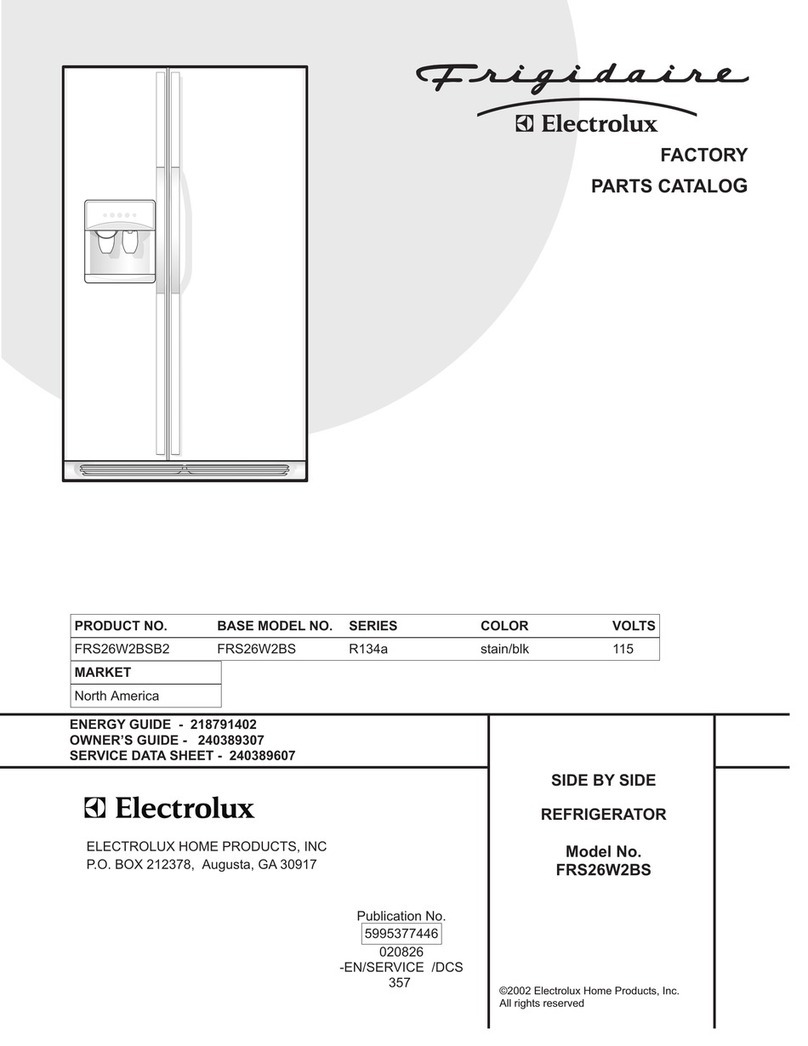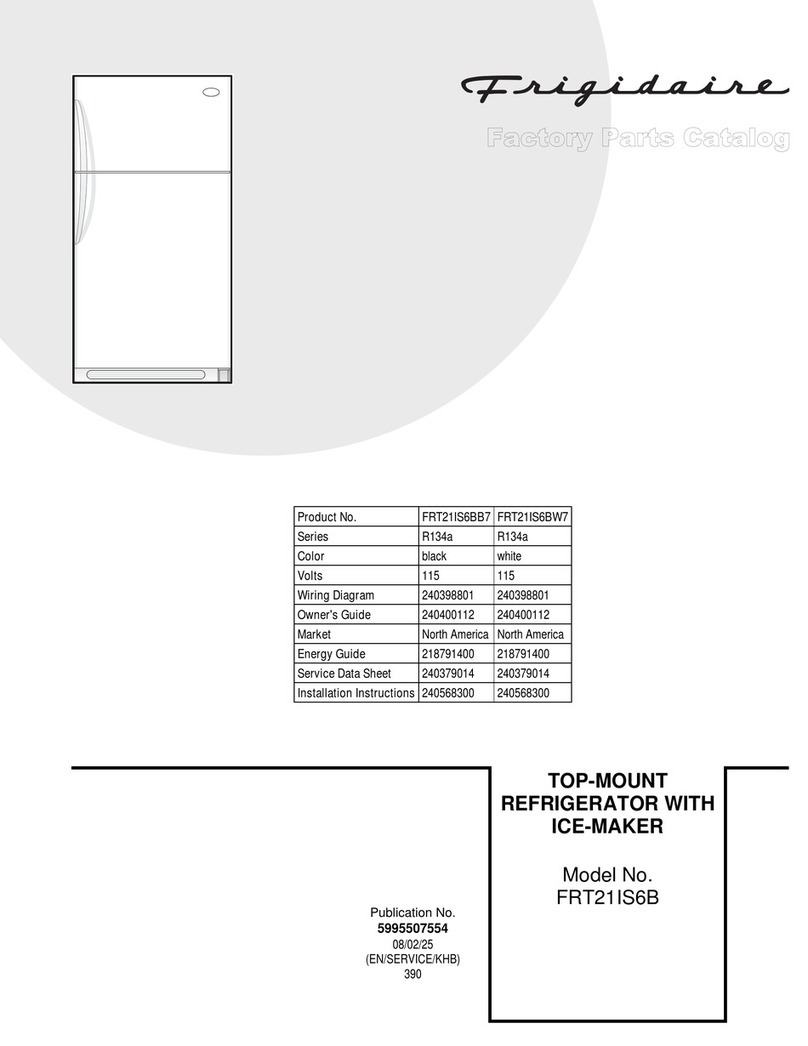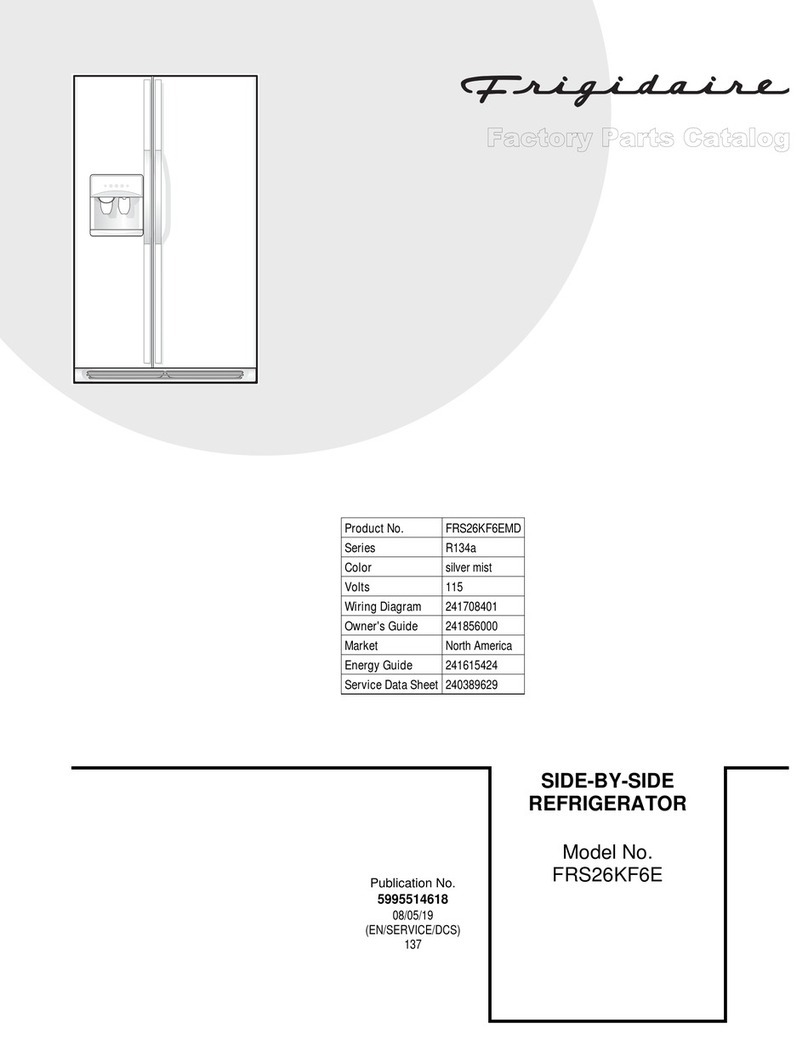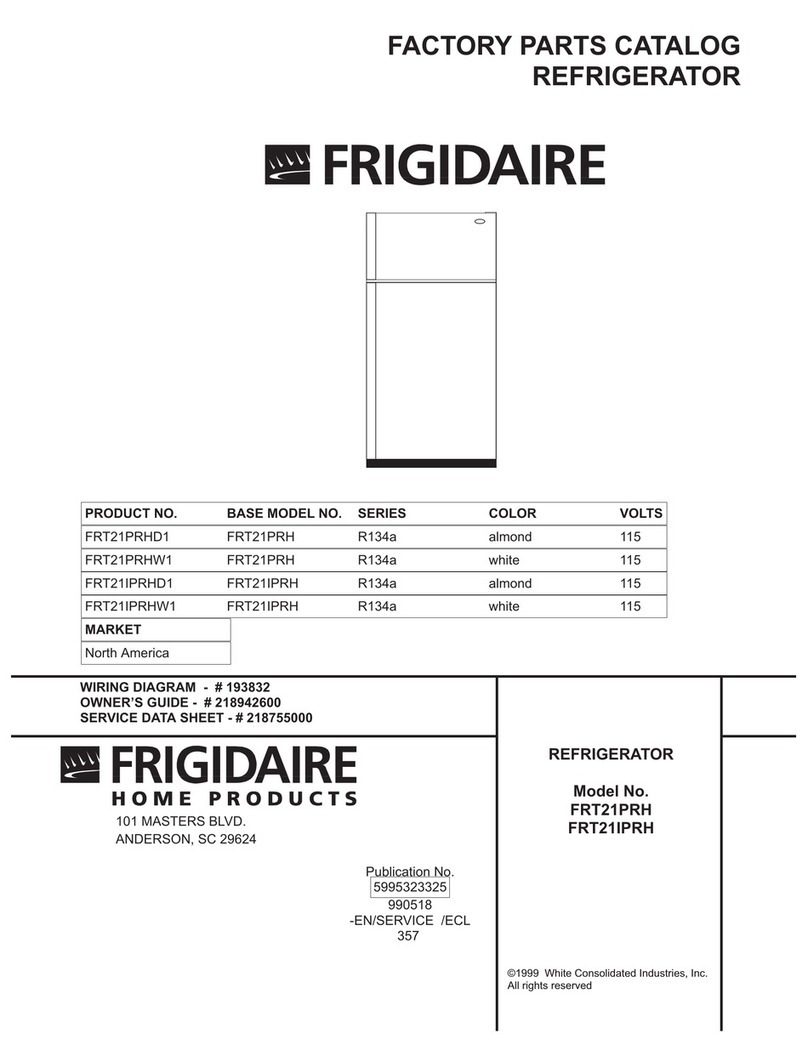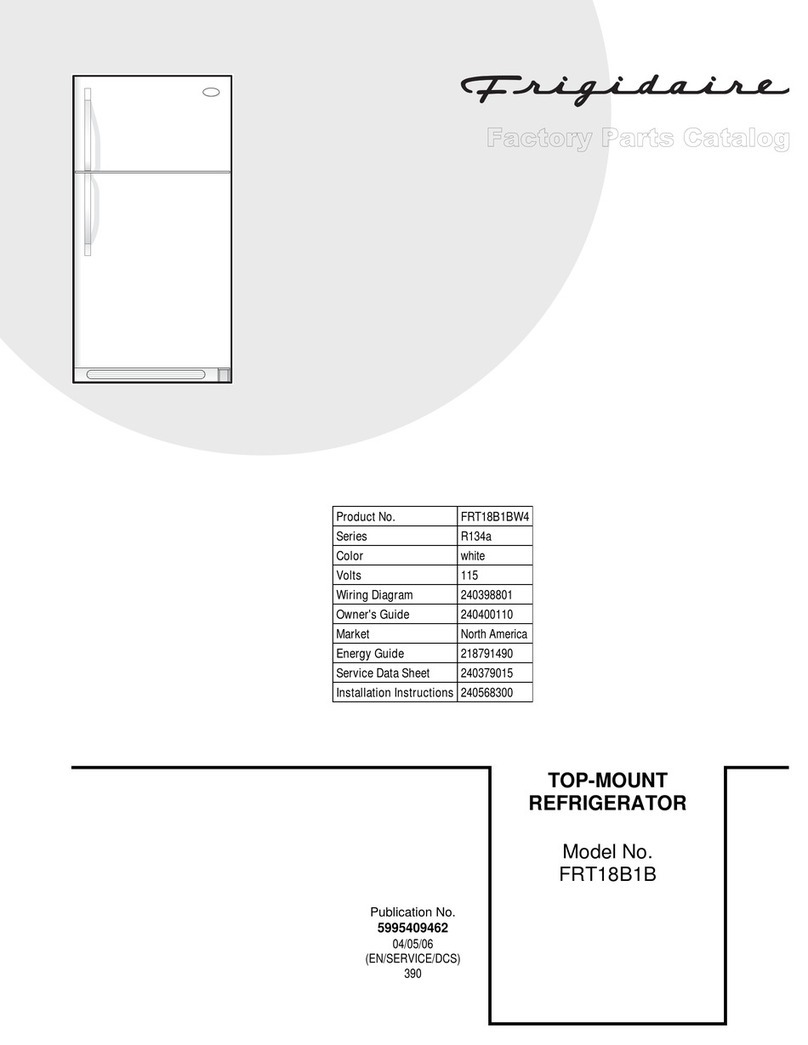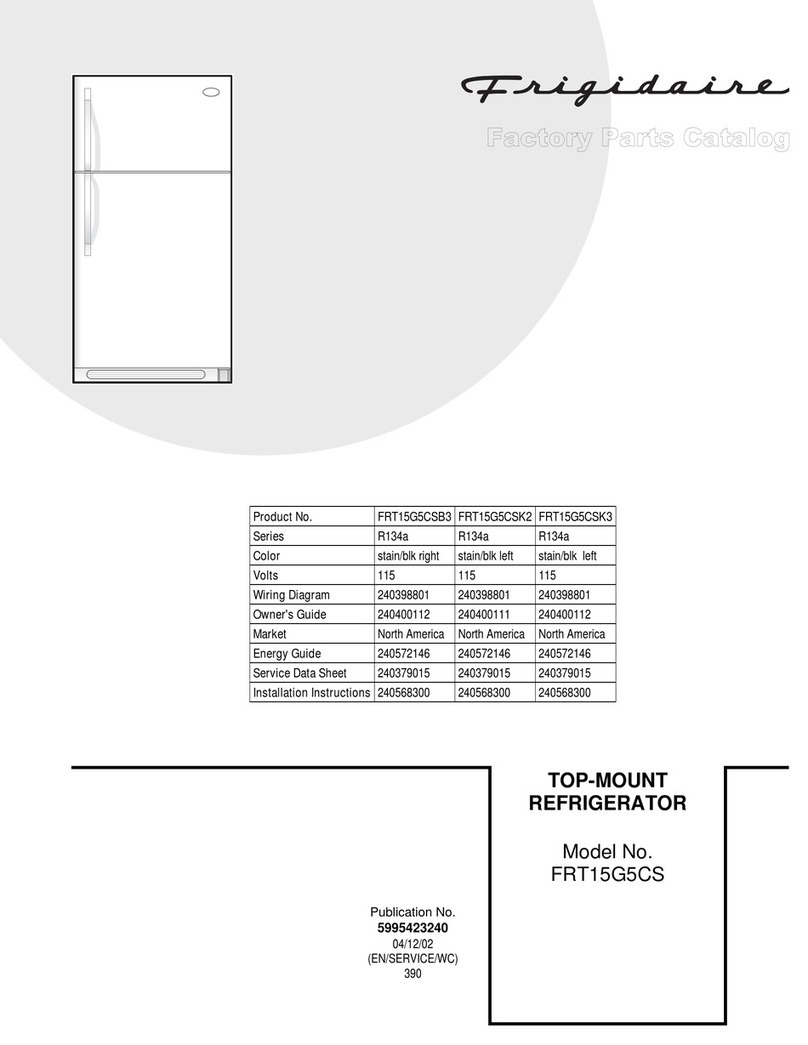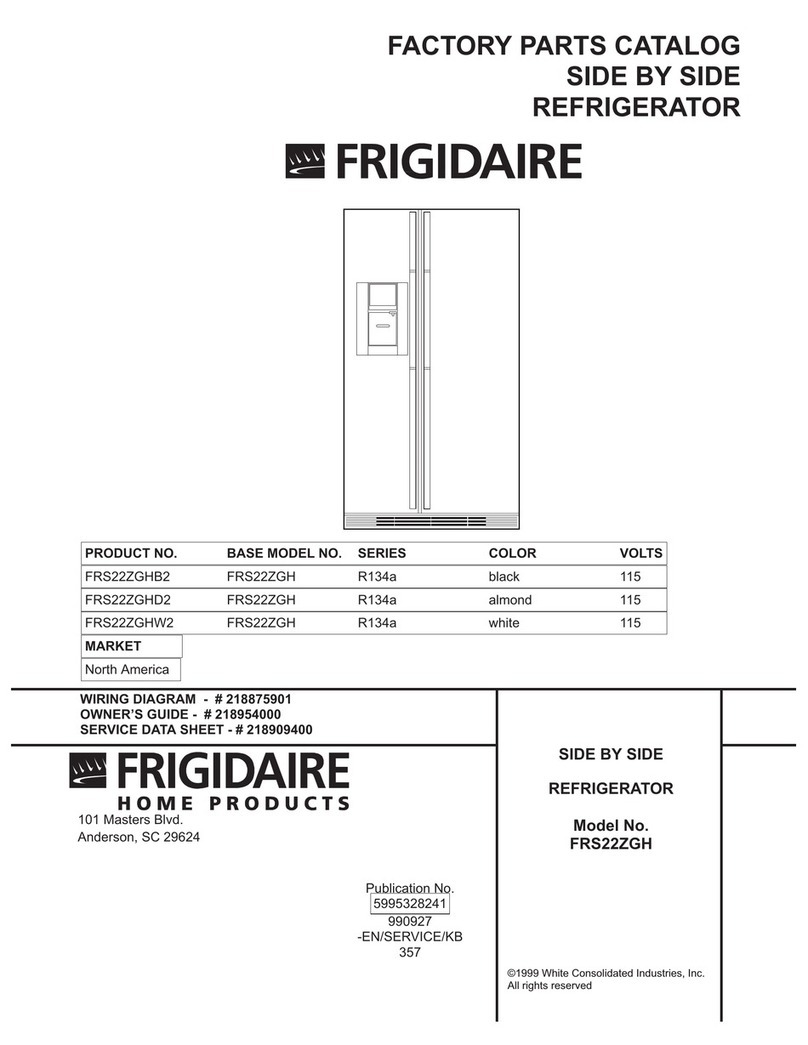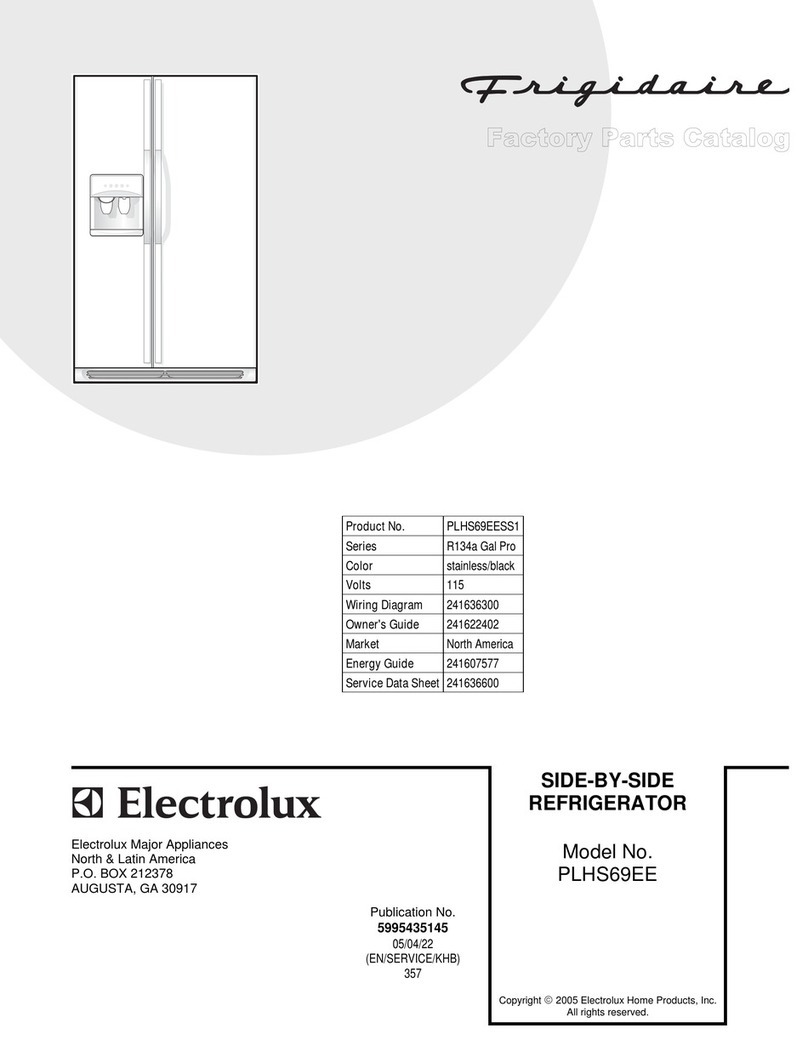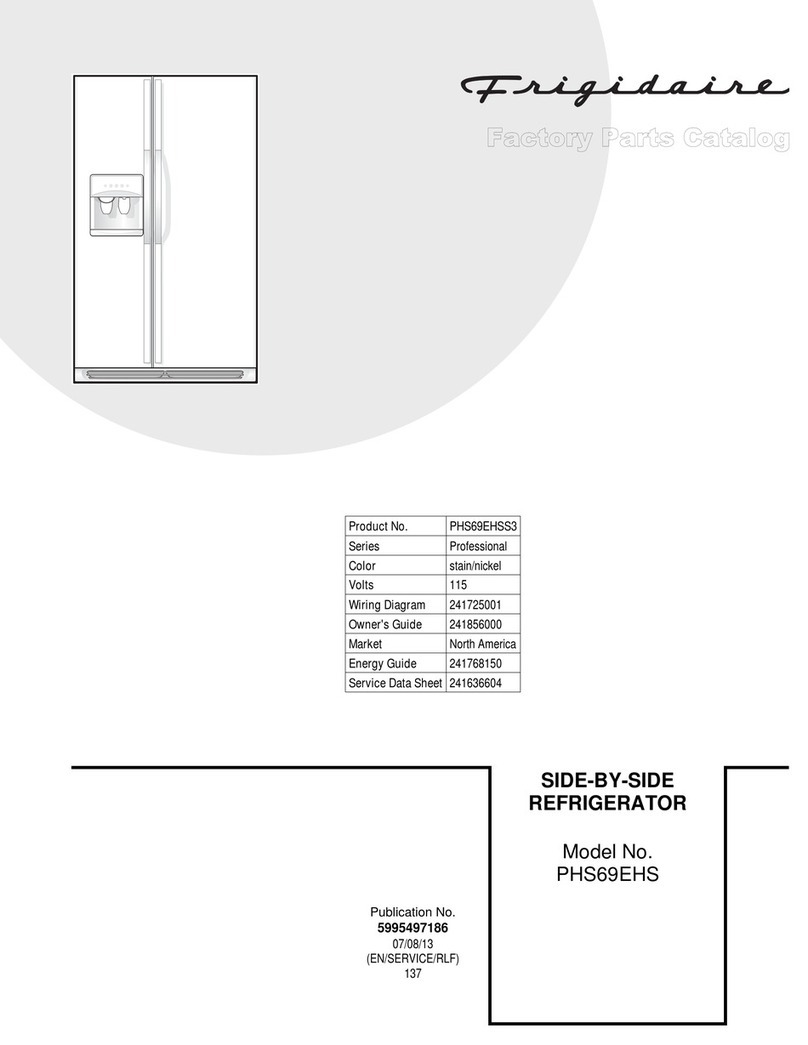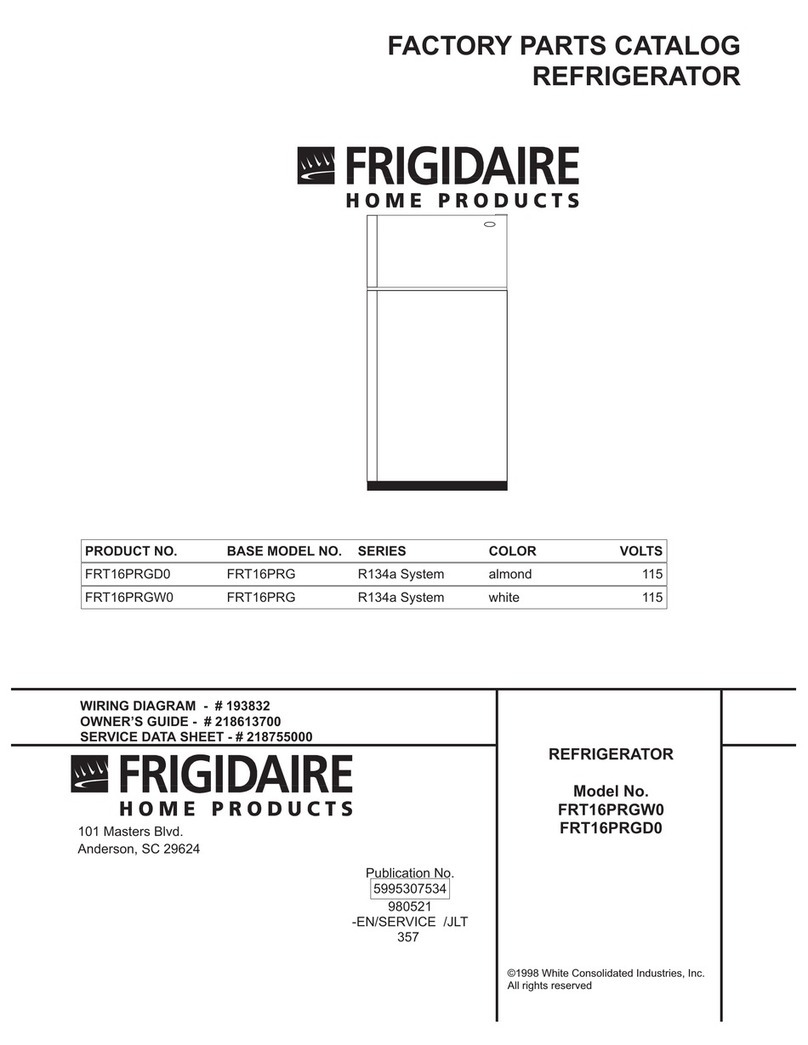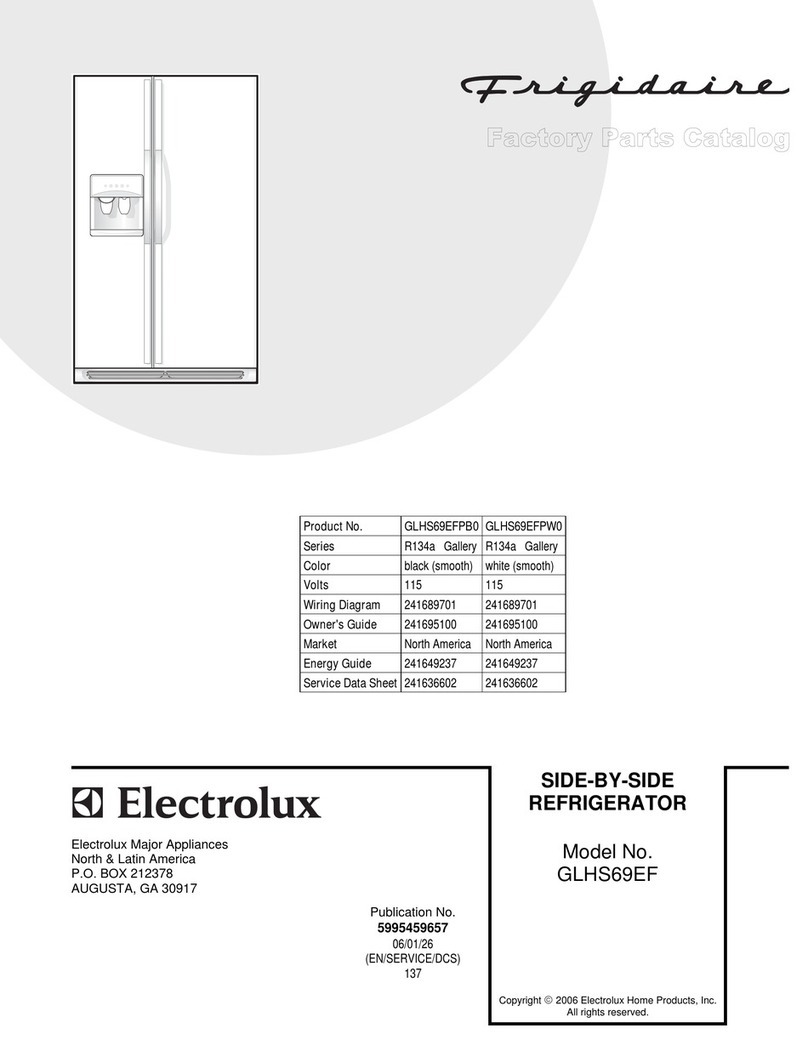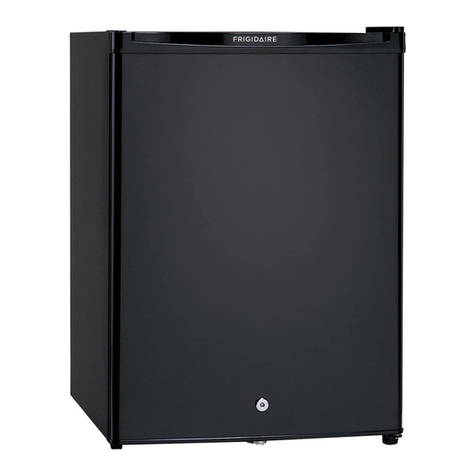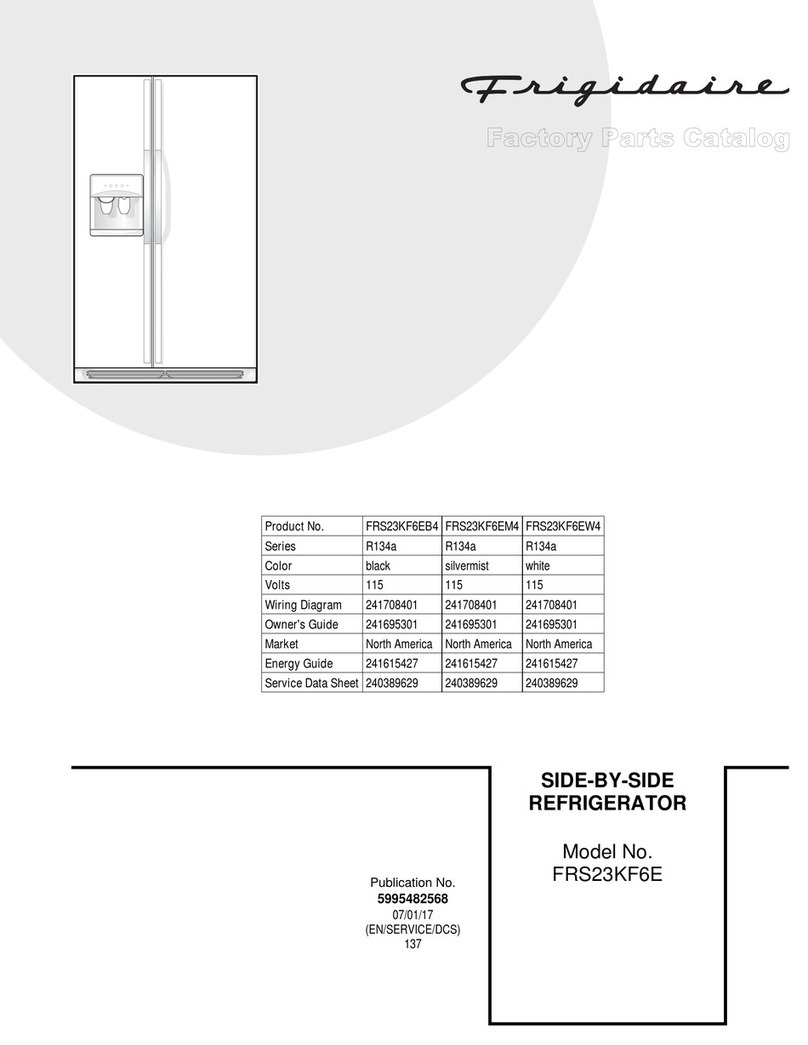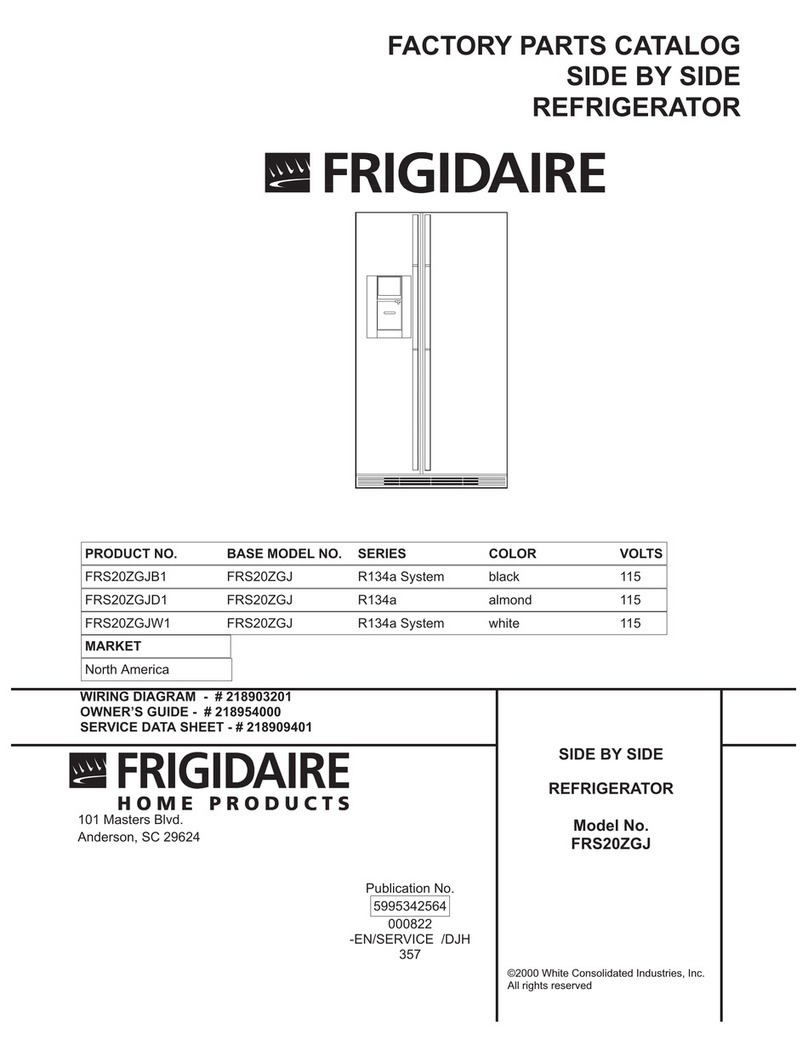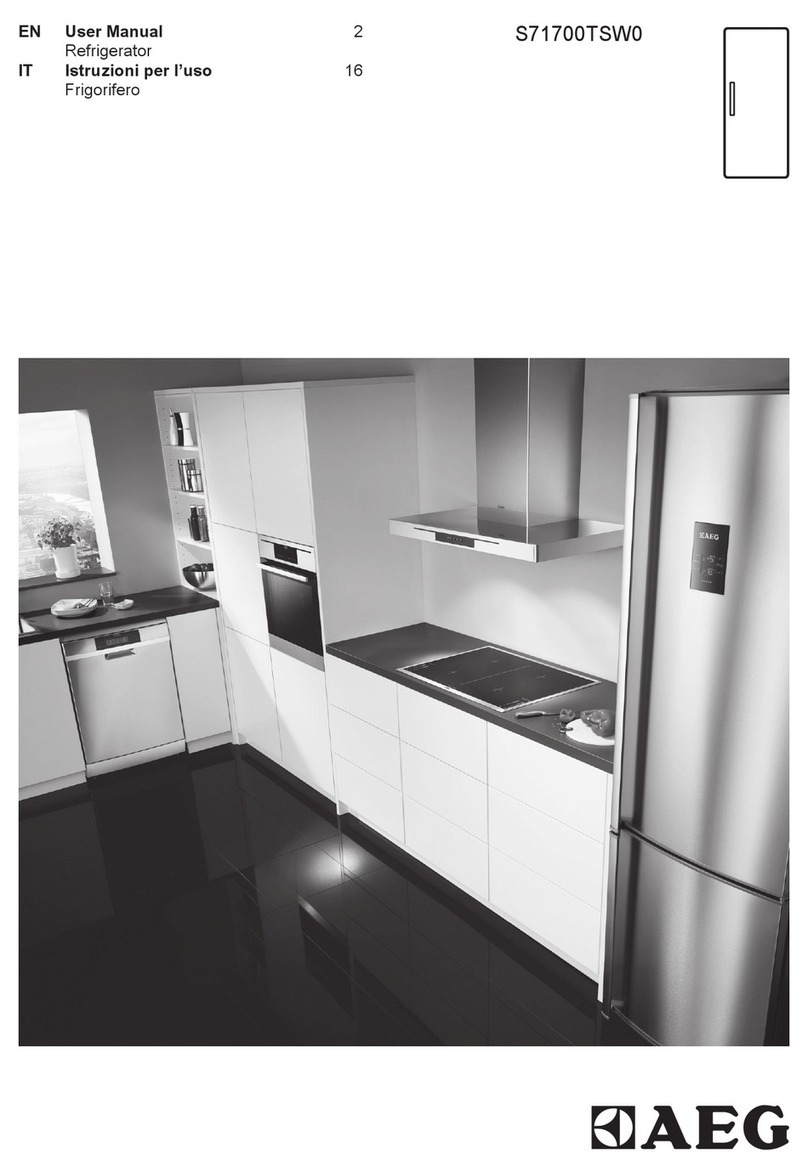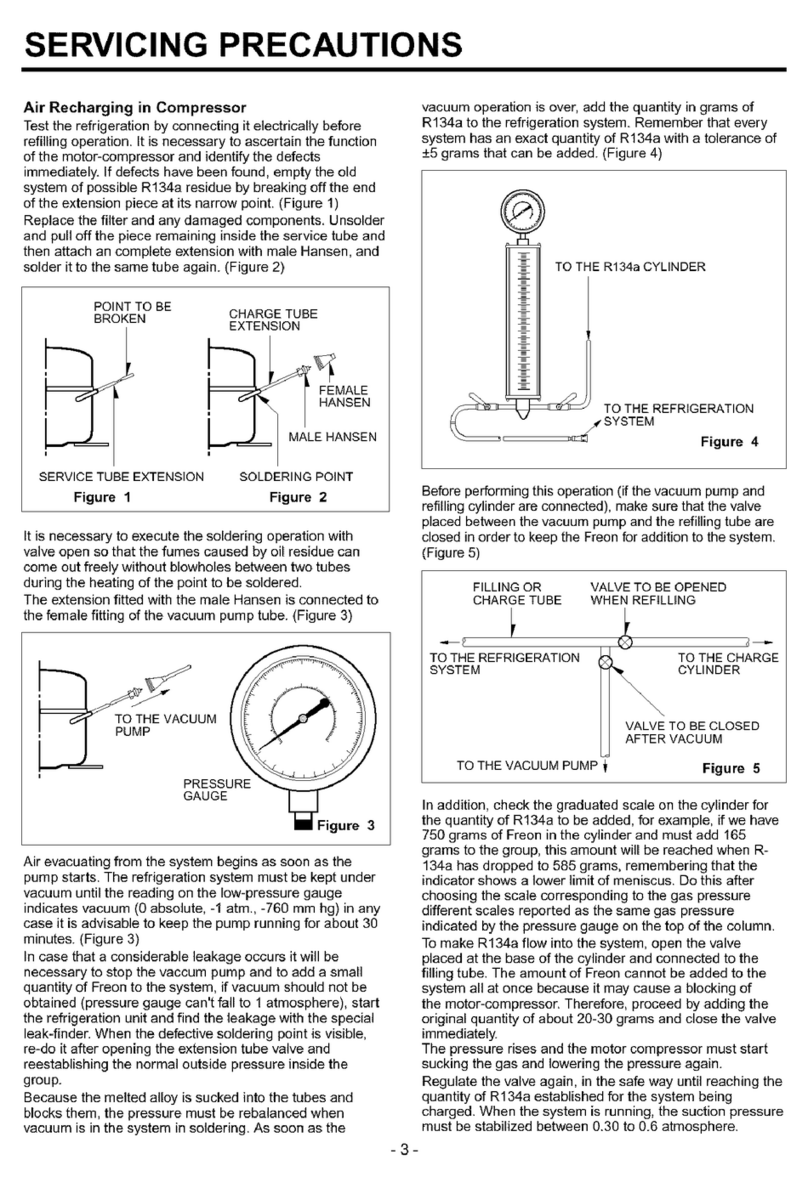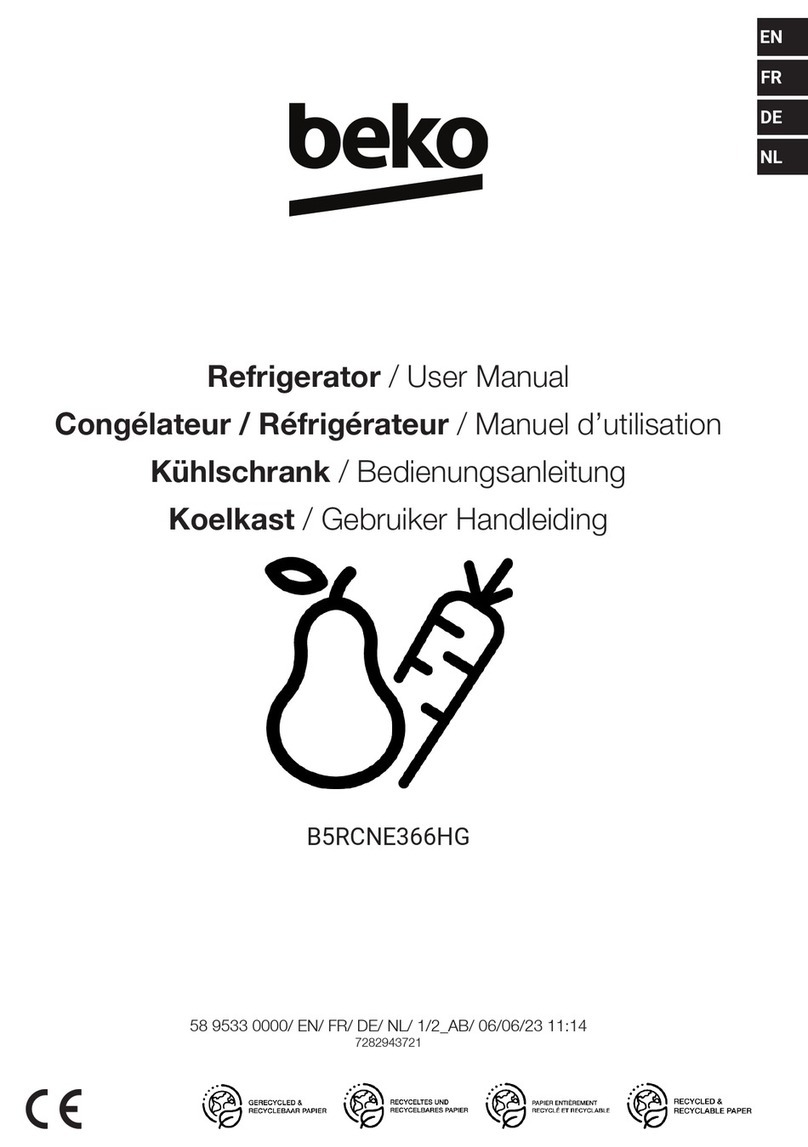7
Storage time and temperature of foods
The storage time can not be determined exactly in
advance, as it depends on the freshness and handling
of the cooled food. That is why the storage time made
known is only informative.
If you do not want to use up deep-frozen foods bought
immediately they can be stored for about 1 day (until
dissolving) in this type of refrigerator. If the deep-
frozen food has already dissolved, refreezing is not
recommended, it has to be used up as soon as
possible.
How to use the cooling compartment
Developing interior air circulation is necessary
for adequate cooling. For this reason you are
asked not to cover the whole surface of the wire
shelves with paper, trays, etc.
Do not put hot food into the refrigerator.
Allow it to reach room temperature naturally.
In this way unnecessary frost building up can be
avoided.
Foods can take over odours from each
other. So it is essential to put foods in
closed dishes or wrap them in cellophane,
aluminium foil, grease-proof paper or cling film
before placing them into the refrigerator. This way
foods will keep their moisture e.g. vegetables will
not dry out after some days.
Some useful information and
advice
The variable shelves are worth paying attention
to, which increases the usefulness of the fresh
food compartment considerably. Rearranging the
shelves is also possible when the door is open at an
angle of 90°.
Hints and ideas
In this chapter practical hints and ideas are given
about how to use the appliance to reach maximum
energy saving and there is environmental information
about the appliance as well.
How to save energy
Avoid putting the appliance in a sunny place and
near anything that gives off heat.
Be sure that the condenser and the compressor
are well ventilated. Do not cover the sections where
ventilation is.
Wrap products in tightly closing dishes or cling film
to avoid building up unnecessary frost.
The appliance and environment
This appliance does not contain gasses which
could damage the ozone layer, in either its
refrigerant circuit or insulation materials. The
appliance shall not be discarded together with the
urban refuse and rubbish. Avoid damaging the
cooling unit, especially at the rear near the heat
exchanger. Information on your local disposal sites
may be obtained from your municipal authorities.
The materials used on this appliance marked with
the sympol are recyclable.
Maintenance
Defrosting
Bleeding part of the moisture of cooling chamber in
form of frost and ice goes with the operation of the
refrigerator.
Thick frost and ice has an insulating effect, so it
reduces cooling efficiency as the temperature
increases and it needs more energy.
At this type of appliance defrosting cooling
compartment is automatic without any external
intervention.
The thermostatic control interrupts the operation of
compressor at regular intervals for more or less
time - during this cooling is interrupted -
temperature of the cooling compartment increases
and defrosting occurs. After defrosting the
thermostatic control restarts operation of the
system.
Melting water flows through defrost water outlet into
the evaporative tray maintained on the top of
compressor and evaporates due to warmth of it.
Occasionally check the defrost water outlet not to
be clogged up.
The most typical case of clogging up in the defrost
water outlet when you put food wrapped in some
paper into the appliance and this paper contacts
Do not leave the door open longer than
necessary and avoid unnecessary openings.
Put foods into the appliance only in a closed
dish.
Put warm foods into the appliance only when
they are at room temperature.
Keep the condenser clean at the back of the
appliance.


